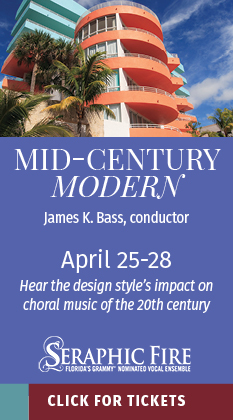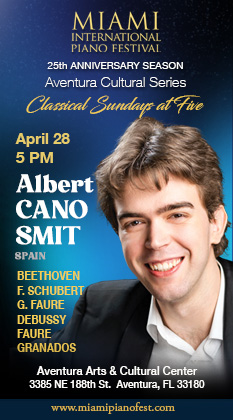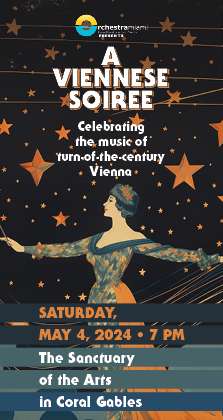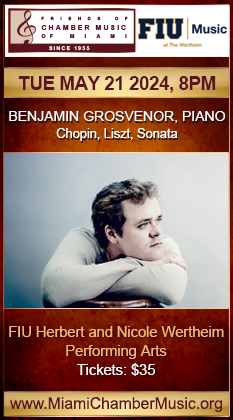St. Lawrence String Quartet delivers edgy virtuosity at the Kravis Center
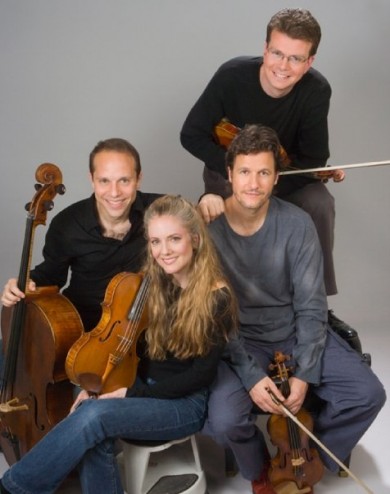
The St. Lawrence String Quartet performed works of Haydn, Britten and Dvořák Saturday night at the Kravis Center in West Palm Beach.
“Look at his shoes!” “See his shoes?” whispered audience members, as the St. Lawrence String Quartet musicians walked on stage Saturday at the Kravis Center in West Palm Beach.
The garish red shoes worn by violinist Geoff Nuttall (a gesture toward the holiday season, he explained later from the stage) weren’t exactly standard-issue for a classical violinist, and they indicated this was no ordinary quartet and would be no ordinary concert.
The St. Lawrence String Quartet has an edgy, contemporary reputation that makes it hard to believe it was founded back in 1989. Now in residence at Stanford University, the quartet has established itself as one of the world’s leading chamber ensembles, with a repertoire that goes way beyond the standard works. The ensemble will perform again in South Florida Saturday night, when they team up with the New World Symphony and composer John Adams to perform his Absolute Jest for string quartet and orchestra, a work composed for the quartet and given its premiere last March in San Francisco.
The ensemble opened Saturday’s concert with Haydn’s String Quartet in D Minor, Op. 76, No. 2, a turbulent work leavened with glints of the composer’s playfulness and humor. The ensemble brought to the performance a nerviness not often associated with the Classical-era master.
Despite the odd shoes, Nuttall showed himself to a be a virtuoso of high caliber, playing fast, difficult passages in the first movement with an extroverted energy, razor-sharp clarity and absolute assurance. Although solo passages showed the individual musicians could deploy rich sounds, this is not a quartet that works overtime to produce a plush ensemble tone. There was a leanness to the playing and a sense that this was a group of individuals, rather than a single 16-stringed instrument. The second movement, a graceful serenade in the first violins with a plucked accompaniment, was played in such a strongly marked, aggressive style that it seemed almost a parody. The last movement was taken at high speed, a bumptious, rollicking burst of energy.
Britten’s String Quartet No. 2, Op. 36, composed just after the opera Peter Grimes, tilts the emphasis of the form toward the last movement, a massive set of variations over a bass line—sometimes implied, sometimes actual —called a “Chacony” (the English spelling of the more common French term chaconne.) This use of an old form was intended in part as a tribute to Britten’s hero, the 17th century English composer Henry Purcell, and it produced the most memorable playing of the evening.
The Chacony opened with the theme that would underlie the movement, played in unison with perfect intonation and austere authority. From there, the variations began, developing harmonic richness and rhythmic complexity, as the movement built in power and intensity. Expressive solos by the violist Lesley Robertson and cellist Christopher Costanza came off as cadenza-like improvisations, giving all the more power to the return of the formal, driving precision of the principal theme. The movement built to a climactic, major-key conclusion in repeated broken chords that rang through the hall.
Dvořák’s String Quartet No. 14 concluded the concert. Although this work gave them a chance to play with more lyricism and warmth than the previous works, they played in a hard-driving manner that missed some of the work’s relaxed expressiveness, unaided by some intonation problems in the outer movements. Most successful was the second movement, a quick, dancelike movement highlighted by the crisp, precise playing of second violinist Scott St. John.
The St. Lawrence String Quartet performs 7:30 p.m. Saturday with the New World Symphony and John Adams at New World Center in Miami Beach. nws.edu, 800-597-3331.
Posted in Performances
Leave a Comment
Sun Nov 25, 2012
at 12:04 pm
No Comments
